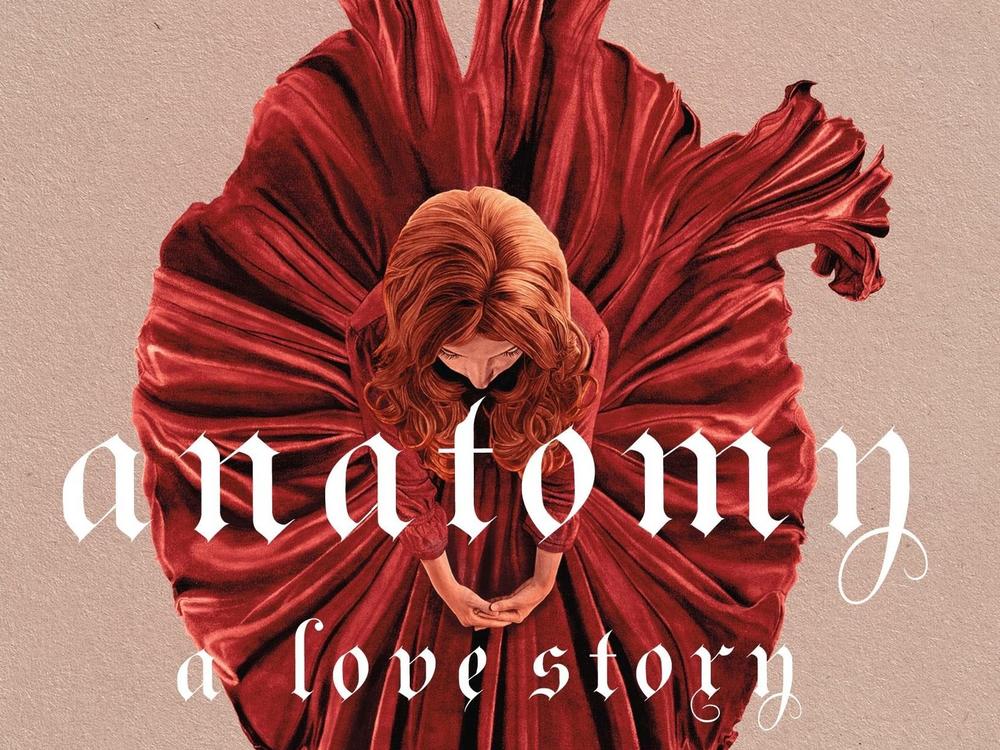Section Branding
Header Content
'Anatomy' is a gothic love story stirring up mystery and medicine
Primary Content
If you've ever had an operation, it's highly likely an anesthetic was in use, whether local or general. Imagine, for a moment, what that operation would have been like without it. Horrible, right?
In Western medicine, at least, chemical compounds like chloroform and ether were first used as anesthetic in the 1840s, according to The Palgrave Handbook of the History of Surgery, and before that, "surgical operations were conducted with little or no pain relief and were attended with great suffering and emotional distress." Among the various men who pioneered different methods is one Sir James Young Simpson, 1st Baronet, a "Scottish obstetrician who was the first to use chloroform in obstetrics and the first in Britain to use ether," according to the Encyclopedia Britannica.
I suspect that Dana Schwartz — author, internet personality, and host of the history podcast Noble Blood — may have been aware of this man, for she's created a deliciously macabre fictional predecessor in her new novel, Anatomy: A Love Story, already chosen for Reese Witherspoon's YA Book Club.
It's 1817 in Edinburgh, and Lady Hazel Sinnet, destined to marry her cousin Bernard Almont, son of a viscount, enjoys spending her time reading medical textbooks and trying to animate dead frogs like one of her idols, Luigi Galvani. Her older brother, George, died a couple years prior from the fictional Roman fever, named for the telltale symptomatic sores that resemble "several stab wounds to the back like Julius Caesar's." Since then, her mother has been overprotective of Hazel's younger brother, Percy, now heir to Hawthornden Castle, the family estate, and has barely paid attention to Hazel, allowing the noble teenager to continue indulging in her desire for medical education.
When Hazel gets a chance to see a surgery performed by the famous Dr. Beecham, grandson of the even more famous Dr. Beecham who authored Dr. Beecham's Treatise on Anatomy: or, the Prevention and Cure of Modern Diseases, she jumps at it. Her cousin, more squeamish than her, won't go with her, so she goes scandalously alone and unchaperoned, hoping to slip in without being noticed after the demonstration starts, but finds the doors locked. Lucky for her, a young commoner around her age, Jack Currer, helps her get inside, and there she sees Dr. Beecham perform a quick and easy amputation, made quiet and orderly by the use of a new compound he calls ethereum.
Jack, the boy who helps Hazel, is what is called a resurrection man. He digs up freshly dead bodies from cemeteries and sells them to the Anatomists' Society, the locus of scientific discovery in Edinburgh and the place where physicians are trained. Doctors and surgeons in training need cadavers, after all, and are officially allowed only to use those of executed criminals. Despite how common hangings may be, there still aren't enough to satisfy the Society's needs, and so it's an open secret that they buy bodies and need people like Jack to sell them. The resurrection men's position is precarious, though, and Schwartz's attention to some of these social and legal details is rather exquisite: "Stealing a body was against the law, but if they actually took any property from the grave, that would make it a felony." So, as if their job weren't unpleasant enough, Jack and other resurrection men need to strip the bodies of their clothing before loading them into a wheelbarrow and taking them away.
Anatomy is a love story, so you can guess that Hazel and Jack soon begin developing a slow-burn romance, although I'd argue that the love story of the subtitle is not only theirs but also Hazel's love affair with medicine and the lengths she'll go to be able to practice it. She pulls a Mulan and dresses in her dead brother's clothes in order to take a course Dr. Beecham is teaching, and later, when things go awry there, begins to procure bodies from Jack as well in order to study the human form on her own.
But to what end? It's 1817, after all, and Hazel is a woman, a noblewoman at that. Who will ever allow her to become a surgeon? Her mother, when she finally wakes up to the fact that Hazel and Bernard are not officially affianced, tells her: "The world is not kind to women, Hazel. Even women like you. Your grandfather was a viscount, yes, but I was a daughter and so that means very little. Your father owns Hawthornden, and when he—when your father dies, Hawthornden will go to Percy. Do you know what happens to unmarried women? [...] Nowhere to live. At the mercy of your relatives. At the mercy of your little brother and whomever he deigns to marry. Begging your sister-in-law for scraps of human decency, praying that she's kind." Later, Hazel herself comes up with a distressing analogy: "Educating her in anatomy would be like teaching a pig to read before the slaughter."
In the background of Hazel's attempts at education and training, poor people in Edinburgh are dying. The Roman fever is back, which is part of it, but there's something else, more sinister at work. Some readers familiar with the mystery genre will likely guess quite a few of the twists as they're signaled pretty early on, but the journey there is nevertheless fun—and, occasionally, squelchy and gruesome, in just the right amount for a gothic love story.
Ilana Masad is an Israeli-American fiction writer, critic, and founder/host of the podcast The Other Stories. Her debut novel is All My Mother's Lovers.
Copyright 2022 NPR. To see more, visit https://www.npr.org.
Bottom Content




